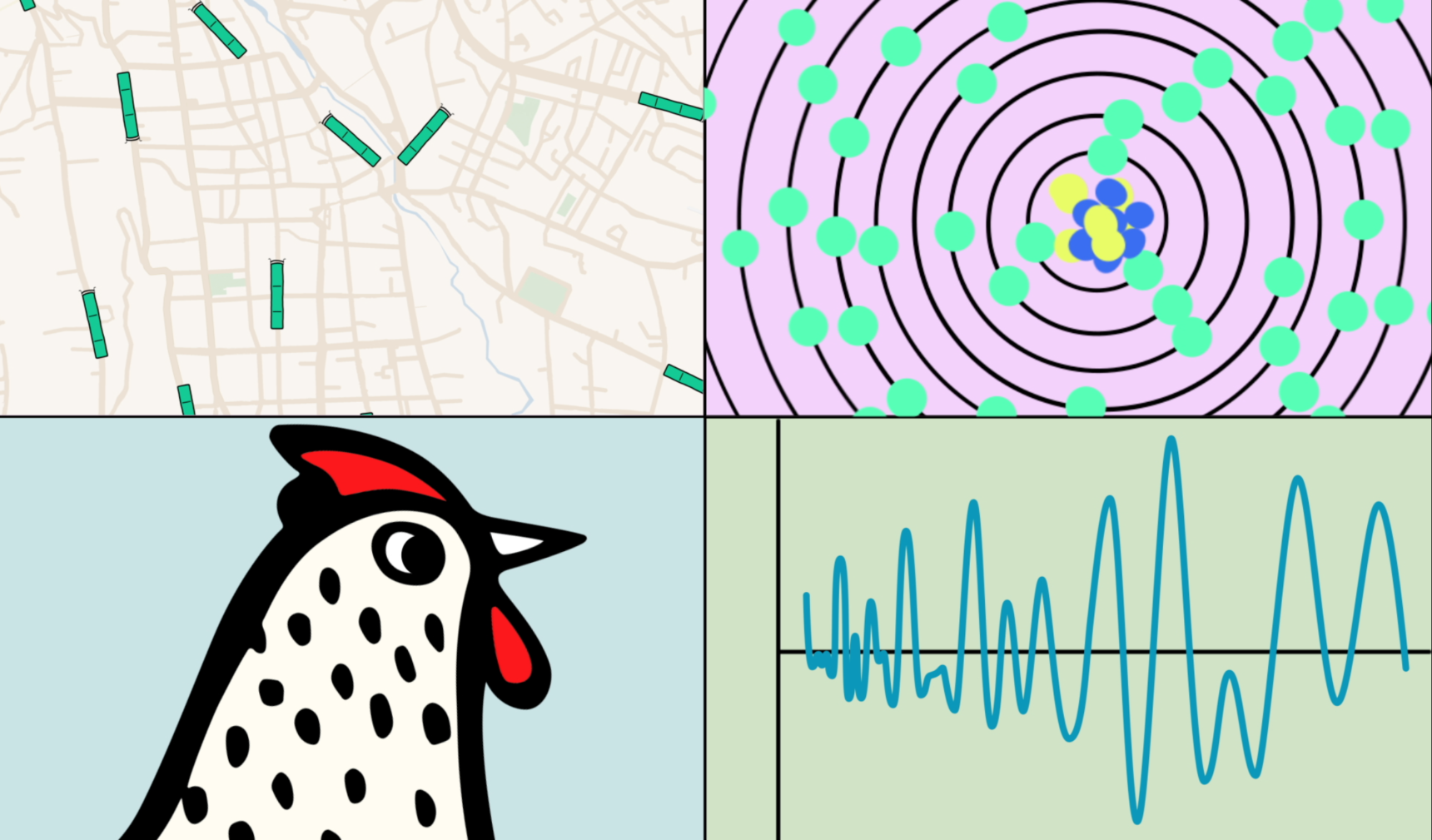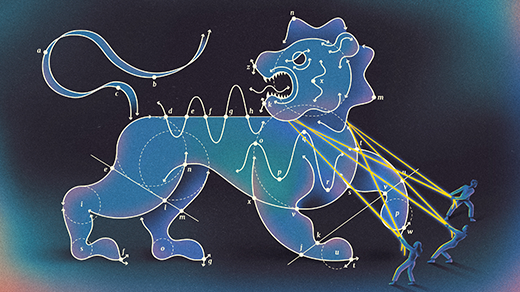The Universal Pattern Popping Up in Math, Physics and Biology

Quanta Magazine
Introduction
“Hello! I am David Kaplan, and I am not an expert. But I hope in this series to learn as much as possible and explain it to you the best way I can.”
So began Quanta Magazine’s In Theory video series, hosted by David Kaplan, a theoretical particle physicist and co-creator of the award-winning documentary Particle Fever. Our first video, published in the summer of 2015, asked and attempted to answer (at least theoretically): “What happens when you fall into a black hole?”
Two years and eight videos later, spanning topics from cosmic inflation to symmetry to the origin of life, season one of In Theory concluded with a virtual Kaplan appearing among the celestial bodies in a virtual-reality tour of how our solar system came to be. (To make this 3-D film available to museum goers, we converted it into a fulldome format, which will be shown in at least 15 planetariums around the country.)
Today marks the start of In Theory season two. As in the first season, we plan to dive into the big, fundamental questions of science and math that serve as intellectual leitmotifs at this magazine. We plan to do so with the same spirit of shared curiosity and open learning, but we also want to experiment with our approach to video storytelling. In the words of the season two producer, Michelle Yun, these five new explainer videos will “demonstrate complex ideas in science and math in a clear, quirky and aesthetically pleasing style.” To help dream up and engineer this new format, we teamed with the talented science filmmaker Emily Driscoll of BonSci Films. Then we picked a fun first topic: universality.
“The second installment of the series dives deep into math and physics theories, kicking off with ‘universality,’ a phenomenon that reveals underlying mathematical connections in the world,” Driscoll wrote in an email. “Depicting universality on screen meant taking a closer look at chicken eyes, a bus system in Cuernavaca, Mexico, and the heavy nuclei of uranium atoms, both for animation and story inspiration.”
We hope you enjoy season two and look forward to your comments.
May 23, 2019, update: This In Theory episode aired on the PBS show SciTech Now. Now also available are episodes two, three, four and five, about the AdS-CFT correspondence, the concept of emergence, the difficult math behind turbulent flows and the impact of Feynman diagrams on theoretical physics.




